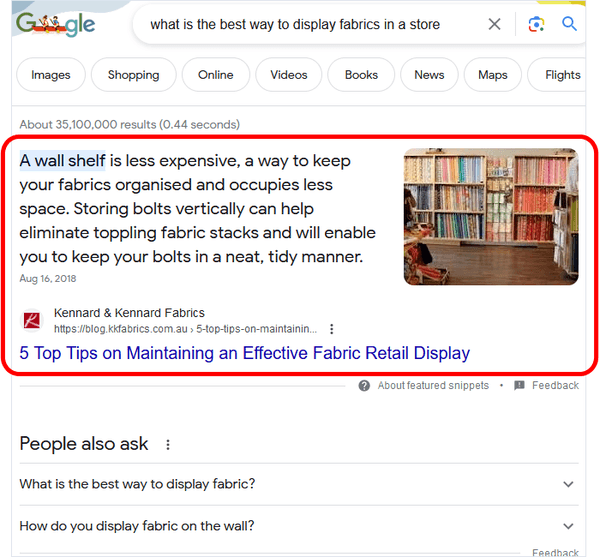Unlocking the Secrets of B2B Blogging: What Every Writer Needs to Know
In the world of B2B sales, blogging is a key component of the first stage of the B2B sales funnel — the awareness stage when a prospect first learns about a company’s products or services.
Blogs are typically considered top of funnel (TOF) content, and their purpose is to draw in potential customers and encourage them to engage with the company.
A blog post is often the first point of contact a company has with a potential customer, so it’s important to make a good impression and start earning trust.
Writing effective B2B blog posts requires more than good writing skills — it requires understanding the purpose of an individual blog post, and how to create a post that helps attract and engage your target audience.
This is also why B2B blogging is an excellent opportunity for freelance writers. B2B companies typically need blog posts on very specific or technical subjects, which requires writers who can research and write about these topics in a compelling way.
Additionally, B2B companies need to continually update their blog with new posts, so the demand for skilled B2B bloggers is nearly endless.
Here, we’ll look at the steps involved in crafting a strategic B2B blog post, from researching your client’s industry to writing and submitting your post.
1. Research Your B2B Blogging Client and Their Industry
When you take on a B2B blogging assignment, one of the first things you should do is research both your client and their industry thoroughly.
Start by getting to know your client’s products or services intimately, as well as what topics they have already covered on their site.
You’ll also want to become familiar with the industry your client serves. You can find industry-related information by reading the websites of trade associations, industry thought leaders, your client’s competitors, industry forums, or any relevant trade publications and journals.
It’s a good idea to write down potential topic ideas you come across during your research — this will make it easier for you to craft an effective post later on.
Also keep an eye out for any current trends within the industry that may be worth discussing in your blog posts.
2. Get Familiar with SEO
Search engine optimization (SEO) is an important factor to consider when writing a B2B blog post. SEO can help improve the visibility of your post, resulting in more traffic and potentially better lead generation for your client.
SEO is a huge topic, which we cover in more depth in our free resource The Ultimate Guide to SEO Content Writing.
However, the fundamental principle behind SEO as a writer is to create engaging and informative content that can easily be found by search engines. And there are many advantages to doing this.
Blog posts and other webpages that are search-engine-optimized will be displayed higher on search results pages, like this one:

You can see that a blog post from Kennard & Kennard Fabrics (a wholesale fabric supplier) was the top result for the search term “what is the best way to display fabrics in a store.”
This blog post is an excellent example of SEO for a few reasons:
- It’s about a very clear topic — how to display fabric in a store. This makes it easy for a search engine to match the blog post to a user’s search.
- The topic is directly targeted toward the company’s ideal customers — fabric retailers. It’s a topic only fabric retailers would be searching for, so Kennard & Kennard knows that anyone who finds their blog post through an online search is already an appropriate lead.
- It provides useful information about an issue many of their ideal customers face. This shows they understand and care about their customers’ needs, and they have the knowledge and expertise to back it up.
In the blog post itself, the writer calls out exactly who this blog post is targeted for (i.e., those who are running a handmade business or a patchwork and quilting store):

It’s no surprise a customer-focused blog post like this one earned the top spot on a Google search. And there’s a good chance anyone who finds that blog post through an online search would be more inclined to investigate the company’s products further.
That’s how search-engine-optimized blog posts can help support lead generation and B2B sales.
FREE TRAINING:
Discover Why B2B Copywriting is the Absolute Best Niche for New Writers!
Sign up below to hear from the expert who’s helped hundreds of writers launch lucrative careers in this niche where skilled writers are needed and respected.
3. Choose a Topic for Your Blog Post
The best way to start creating an engaging and search-engine-optimized blog post is to choose a specific topic — or keyword — that your blog post will be about.
A keyword is the word or phrase that someone types into a search engine like Google. If the search engine’s algorithms determine that your blog post is a good match for that keyword, your post will be placed high on the search results page. And that will increase the chances that a searcher will click on it.
We discuss how to choose a keyword in more detail in our SEO guide. However, to get started, you can follow these steps:
- Gather the research you’ve done on your client and their industry.
- Write down the top 10 or 20 topics you think would appeal to their target audience and make good blog posts.
- For each topic, write down a few phrases you think a prospect would likely use in a search to find information about that topic.
- Choose the phrase (keyword) you think would work best for each blog post.
- When it comes time to write each blog post, focus your post solely on the chosen keyword.
That last point is a big one — always keep a single blog post focused on a single topic.
Consider the example post given above: The blog post was clearly about effective ways to display fabric in a store. It didn’t try to include any other topics; it stayed focused on one subject.
This clarity makes it easier for search engines to determine what your blog post is about, and whether they should include it in any search results.
4. Outline Your Blog Post
Because B2B blog posts are often on fairly technical or complicated topics, it’s especially important to communicate the information in an organized way. A well-structured article will be easier for readers to understand and will keep them engaged throughout.
It can be tempting to begin writing a blog post from scratch. But making a brief outline first will help you create a better final product and save you time in the long run.
When outlining a blog post, start by creating subheadings to divide the post into logical sections. What sequence of ideas or concepts would be the best way to present the information?
Next, determine the key points you want to make in each section to support the main concepts. Using numbered lists or bullet points where appropriate can help break up your content and make it easier to read and understand.
It’s also important at this stage to check that you’re following your client’s guidelines. If they’ve provided any specifications for the article, such as tone, total word count, keywords to include, or other elements, make sure these are all factored into your outline.

5. Write Your Post
Once you’ve done your research, chosen the topic for your post, and outlined the overall structure, it’s finally time to start writing!
The title or headline of a blog post is usually the first thing people see — and it should be as compelling as possible so readers are drawn in and want to click through.
When writing headlines, try to include the main keyword you’ve chosen for your post, because that will help search engines place it higher on the results page. Additionally, make sure the headline is attention grabbing and provides enough information for readers to know what they’re about to read.
Leads are the first few sentences or paragraphs of your blog post, where you introduce the topic and get your reader’s attention. They should be interesting and informative, as well as provide a hook or an incentive for readers to keep reading.
Body content should support your main argument or topic while providing additional details, facts, and statistics that add value to your article. Additionally, use formatting tools like bolding or italicizing key phrases or words to draw attention to them.
Finally, end with a conclusion that summarizes your main argument or topic and encourages readers to take action, such as sign up for the company’s newsletter or download a lead magnet.
Many writers miss this step — but remember that all pieces of content you create are part of the overall B2B sales cycle. Including a call to action in your blog post will give readers the opportunity to continue their journey with your client’s company.
6. Submit Your Final Work
After you’ve finished writing your blog post, it’s important to do a few last checks before you submit it.
First, make sure all of the information is accurate and up to date and you’ve included your sources for anything you’ve referenced. Give it one last proofread for any typos or grammatical mistakes, and double-check the formatting of your post to make sure it looks professional and follows any guidelines provided by your client.
Then, send your final draft to your B2B blogging client in your agreed-upon format, whether it’s a Word document or other format. It’s likely your client will request some changes or edits before publishing it on their website. This is normal and should not be seen as an insult; feedback from clients is only meant to help improve the quality of your work.
Once the post has been approved, it’s usually up to the client to format and publish the article on their site. Depending on your agreement, you may be listed as the author or you might be ghostwriting the post to publish under their name.
Regardless, you can soon sit back and enjoy seeing the fruits of your efforts in a live blog post!
Chapter Summary
B2B blogging requires a good understanding of the needs of your client, so you can create a blog post that will be relevant and appealing to your client’s ideal customers.
You’ll also need to factor in some SEO basics to make sure both your readers and search engines can find your blog post.
By taking the time to carefully research and write a well-organized blog post, you can create a post that will not only benefit your client but also provide real value for readers.
If you’re interested in learning more about blogging, check out our free resource How to Make Money Blogging: A Beginner’s Guide

B2B Writers International: World-Class Training and Support for a Well-Paid Writing Career in B2B
The business-to-business industry is desperate for trained, professional writers. Learn to write solid B2B copy, land more clients, and be constantly in demand. For beginning and advanced writers. Learn More »
What’s Inside This B2B Copywriting Guide?
Introduction Welcome
B2B Copywriting: A Comprehensive Guide to Writing for the B2B IndustryChapter 1
Why Lead Generation Is Critical for B2B Sales (And How to Get It Right)Chapter 2
Unlocking the Secrets of B2B Blogging: What Every Writer Needs to KnowChapter 3
How to Create a Winning Social Media Strategy for B2B CompaniesChapter 4
How to Write a White Paper (That’s Not Boring)Chapter 5
How to Write a B2B Case Study That Speaks to Your Ideal CustomerChapter 6
How to Write B2B Newsletters to Boost Sales and EngagementChapter 7
Sales Enablement Copywriting for the B2B Industry: The Incredible Opportunity You’ve Never Heard Of